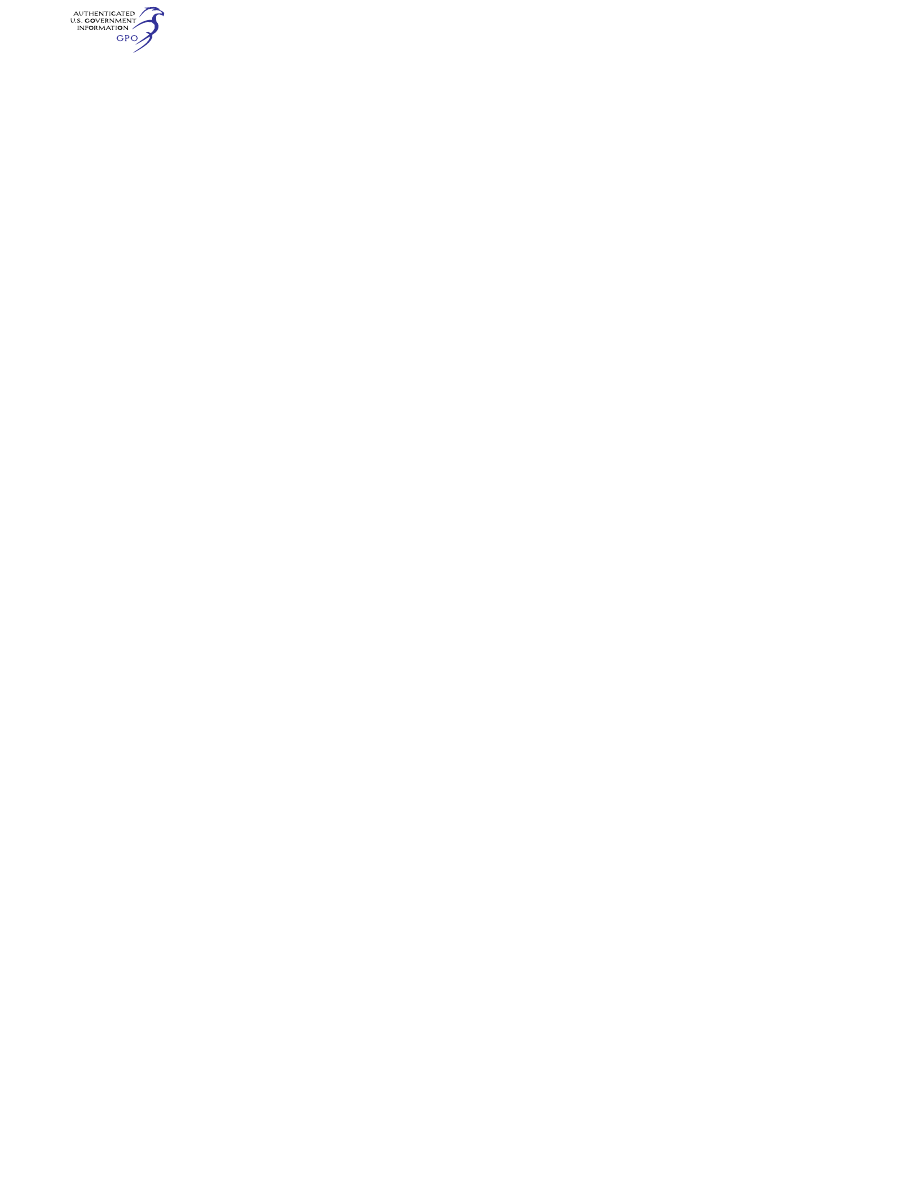
171
Federal Aviation Administration, DOT
§ 121.407
it may file a petition to reconsider the
notice with the responsible Flight
Standards office. The filing of a peti-
tion to reconsider stays the notice
pending a decision by the Adminis-
trator. However, if the Administrator
finds that there is an emergency that
requires immediate action in the inter-
est of safety in air transportation, he
may, upon a statement of the reasons,
require a change effective without
stay.
(f) Each certificate holder described
in § 135.3 (b) and (c) of this chapter
must include the material required by
§ 121.403 in the manual required by
§ 135.21 of this chapter.
(g) The Administrator may grant a
deviation to certificate holders de-
scribed in § 135.3 (b) and (c) of this chap-
ter to allow reduced programmed hours
of ground training required by § 121.419
if it is found that a reduction is war-
ranted based on the certificate holder’s
operations and the complexity of the
make, model, and series of the aircraft
used.
[Doc. No. 9509, 35 FR 90, Jan. 3, 1970, as
amended by Amdt. 121–207, 54 FR 39293, Sept.
25, 1989; Amdt. 121–250, 60 FR 65948, Dec. 20,
1995; Amdt. 121–253, 61 FR 2612, Jan. 26, 1996;
Docket FAA–2018–0119, Amdt. 121–380, 83 FR
9172, Mar. 5, 2018]
§ 121.406 Credit for previous CRM/
DRM training.
(a) For flightcrew members, the Ad-
ministrator may credit CRM training
received before March 19, 1998 toward
all or part of the initial ground CRM
training required by § 121.419.
(b) For flight attendants, the Admin-
istrator may credit CRM training re-
ceived before March 19, 1999 toward all
or part of the initial ground CRM
training required by § 121.421.
(c) For aircraft dispatchers, the Ad-
ministrator may credit CRM training
received before March 19, 1999 toward
all or part of the initial ground CRM
training required by § 121.422.
(d) In granting credit for initial
ground CRM or DRM training, the Ad-
ministrator considers training aids, de-
vices, methods, and procedures used by
the certificate holder in a voluntary
CRM or DRM program or in an AQP
program that effectively meets the
quality of an approved CRM or DRM
initial ground training program under
section 121.419, 121.421, or 121.422 as ap-
propriate.
[Doc. No. 27993, 60 FR 65949, Dec. 20, 1995]
§ 121.407 Training program: Approval
of flight simulation training de-
vices.
(a) Each FSTD used to satisfy a
training requirement of this part in an
approved training program, must meet
all of the following requirements:
(1) Be specifically approved by the
Administrator for—
(i) Use in the certificate holder’s ap-
proved training program;
(ii) The type airplane and, if applica-
ble, the particular variation within
type, for which the training or check is
being conducted; and
(iii) The particular maneuver, proce-
dure, or flightcrew member function
involved.
(2) Maintain the performance, func-
tion, and other characteristics that are
required for qualification in accord-
ance with part 60 of this chapter or a
previously qualified device, as per-
mitted in accordance with § 60.17 of this
chapter.
(3) Be modified in accordance with
part 60 of this chapter to conform with
any modification to the airplane being
simulated that results in changes to
performance, function, or other charac-
teristics required for qualification.
(4) Be given a daily functional pre-
flight check before being used.
(5) Have a daily discrepancy log kept
with each discrepancy entered in that
log by the appropriate instructor or
check airman at the end of each train-
ing or check flight.
(b) A particular FSTD may be ap-
proved for use by more than one cer-
tificate holder.
(c) A Level B or higher FFS may be
used instead of the airplane to satisfy
the inflight requirements of §§ 121.439
and 121.441 and appendices E and F of
this part, if the FFS—
(1) Is approved under this section and
meets the appropriate FFS require-
ments of appendix H of this part; and
(2) Is used as part of an approved pro-
gram that meets the training require-
ments of §§ 121.424 (a) and (c), 121.426,
and appendix H of this part.
